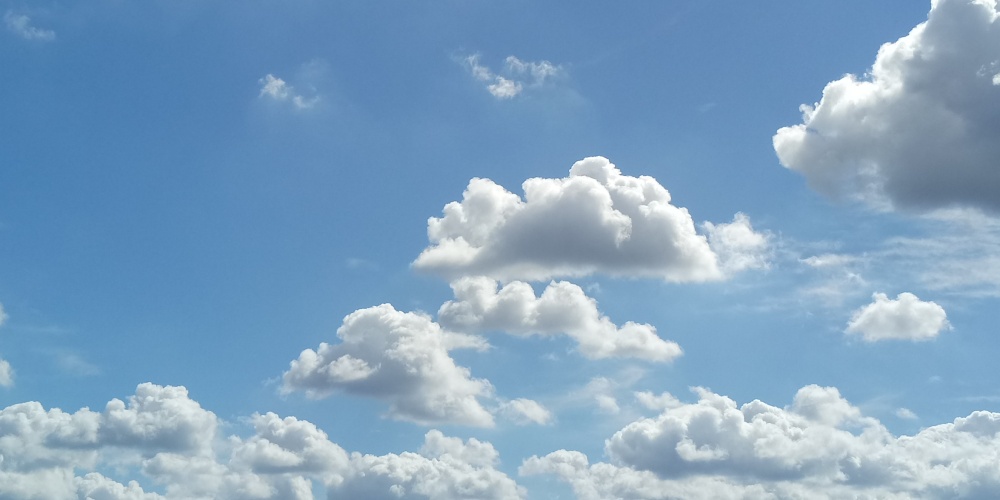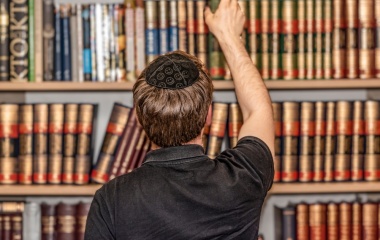
What should one pray for? If we were to take a survey of the typical shul-goer, or even one who is not, I suspect we will hear such ideas as health, peace, justice, economic success, a wonderful family. One might take a look at the siddur and see what our rabbis suggested we pray for. We could then add such items as wisdom, repentance, forgiveness, redemption and the rebuilding of Jerusalem. These are all wonderful things to pray for, and it is for good reason that they are included in the shemoneh esrei that we recite three times a day. Yet perhaps there are other areas we might consider when we pray.
“Rabbi Yocḥanan said in the name of Rabbi Yossi: From where is it derived that the Holy One, Blessed be He, prays?” (Brachot 7a). This question appears to be a most heretical one. Not so much because of the anthropomorphism—the first chapter of masechet Brachot is full of such[1]—but rather, because prayer is about asking G-d to provide for our needs. If one has no needs, one need not pray. The notion that G-d prays implies that G-d has needs and hence, He needs to pray. That this concept is at odds with the idea of an omnipotent G-d need not be stated.
Moreover, the notion of G-d praying is one rooted—or so our Sages claim—in scripture. Responding to Rabbi Yochanan’s question above, the Gemara states, “As it is stated: ‘I will bring them to My holy mountain, and make them joyful in My house of prayer’ (Yishayahu 56:7). It does not say ‘their prayers’, but rather, ‘My prayer’; from here [we derive] the Holy One, Blessed be He, prays”.
Assuming we do not want to take this Gemara literally, we can explain that “My house of prayer” just means the place, i.e., the Temple, where we, the people, gather to pray to G-d[2].
One of the primary, perhaps the primary, purpose of the opening chapter of the Torah is to teach that man is created in the image of G-d. As such we are mandated to actualize our Divine image by imitating G-d. This is most famously expressed regarding the thirteen attributes of prayer: “Just as G-d is kind, so should you be kind” (Shabbat 133a). Imitatio Dei, imitating G-d, is man’s primary function on earth[3]. Anything we are taught regarding G-d is a teaching about G-d’s partner, man.
If our Sages claim that G-d prays, they are teaching that we, too, must pray. Prayer becomes a way to actualize our tzelem Elokim.
And if we want to know what we should be “praying for”, let us see what G-d prays for. “What is His prayer?” the Gemara wonders. “Rav Zutra bar Tovia said [in the name of] Rav: May it be My will that My mercy will overcome My anger and may My mercy prevail over My other attributes and may I act with My children, with the attribute of mercy, and may I enter before them, lifnim meshurat hadin, beyond the letter of the law” (Brachot 7a).
What a beautiful prayer! A prayer that if “answered” would make the world a much better place. Yet this is something we must work hard at. Even G-d, k’veyachol, has a hard time doing so. It is not easy to give up some of our rights, some of what is owing—which is what acting lifnim meshurat hadin requires—especially when dealing with those who would not do the same for you.
So important is this prayer that it serves as a prerequisite for being able to come to “My house of prayer”. Rav Yochanan—the same Rav Yochanan who taught that G-d prays—also taught us that, “Jerusalem was destroyed only because they…established their rulings on the basis of Torah law and did not go beyond the letter of the law” (Bava Metzia 30b).
The symmetry between G-d and man is reflected in the immediate following passage. Rabbi Yishmael ben Elisha related that once, upon entering the Holy of Holies, “he saw Akatriel[4], the Lord of Hosts, seated upon a high and exalted throne.” When G-d asked him for a blessing(!), Rabbi Yishmael repeated “G-d’s prayer”[5] to Him, to which G-d nodded His approval. If this blessing is a worthy one to bless G-d with, it surely is a worthy one to give man.
One may then ask, if this is such an important prayer, why is it not included in our siddur? Why do we not say this every day?
We might suggest that we daven for those things that, to a large extent, are not in our control: wisdom, economic success, health, justice, redemption, forgiveness, repentance. While there is much we can do regarding the above, so much in these matters is out of our control. A farmer can have the best equipment and most efficient operation, but if the weather does not cooperate, it can all be for naught. One can live the healthiest of lifestyles and still, c”v, be struck with illness. There is only so much one person can do regarding justice, peace or redemption. However, acting lifnim meshurat hadin is something totally within our control. There is no need to daven to G-d for help. “Why do you cry”—which, as Rashi explains, means he was praying—“to Me? Speak to the people of Israel and go forward” (Shemot 14:15). Acting lifnim meshurat hadin is, as Rabbi Yishmael noted, not so much a prayer but a blessing. May we be so blessed.
[1] The Rambam vociferously (and quite successfully, we might add) railed against any literal understanding of all anthropomorphisms, equating it with heresy of the highest order, and causing one to forfeit their share in the World-to-Come. Others, even if they agreed that G-d could have no physical form, did not consider such heretical. When learning the first chapter of masechet Brachot, I get the distinct feeling—though I may be very incorrect—that at least some of the rabbis did understand G-d as having physical attributes. Perhaps it was these Sages to whom the Ra’avad was referring when he attacked the Rambam, noting that, “Many greater and better than he followed this opinion according to what they saw in the Biblical verses, and more particularly, in the texts of the Aggadot” (Hilchot Teshuva 3:7).
[2] While we tend to associate the Temple, first and foremost, with the bringing of sacrifices, it is quite clear that our prophets saw the main function of the Temple as a place of prayer. A cursory look at Shlomo’s speech to the Jewish people at the dedication of the Temple has him referencing prayer no less than 10 times. The theme of forgiveness is mentioned a number of times but there is nary a reference to sacrifices.
[3] To cite one telling example, Rav Soloveitchik often referred to himself as a melamed, a teacher, that being the role of G-d, who is melamed Torah le’amo Yisrael.
[4] We may not know exactly who Akatriel is, but it is noteworthy that the name means, “the crown of G-d”.
[5] Rabbi Yishmael lived when the Temple stood, during the time of the Tannaim whereas Rav, an Amora, in whose name the prayer of G-d was cited lived much later. Thus, God learned from Rabbi Yishmael how to pray! I thank Rabbi Jonathan Ziring for this insight.



